13 Best Herbal Teas For Flu
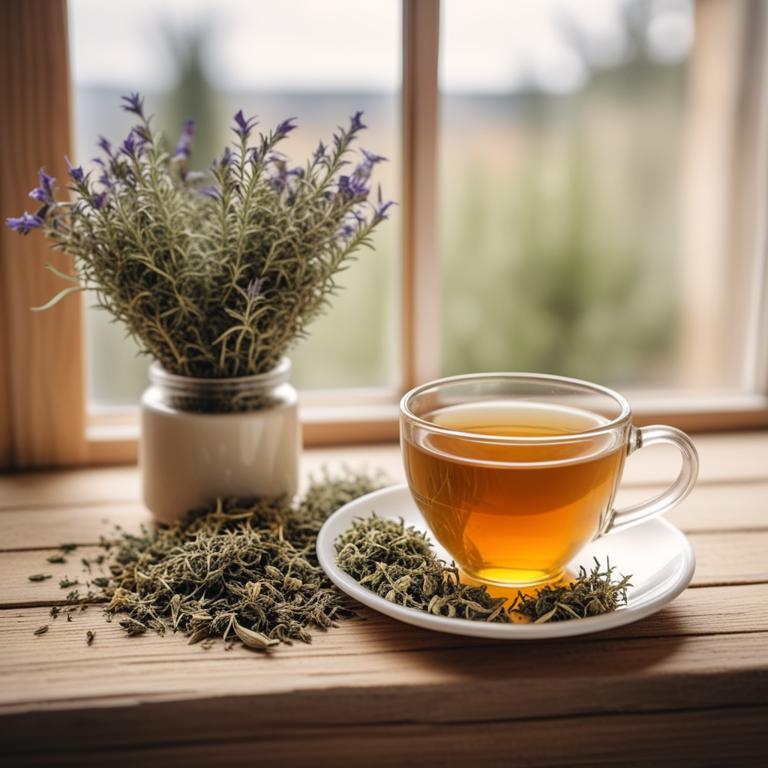
Herbal teas for Flu are a type of remedy that combines the natural healing properties of herbs with the soothing effects of tea to help alleviate the symptoms of the flu.
These teas are made from a variety of herbs, such as peppermint, ginger, and eucalyptus, which have anti-inflammatory and antiviral properties that can help to reduce the severity of flu symptoms.
Some popular herbal teas for flu include chamomile, which can help to calm a sore throat and promote relaxation, and yarrow, which has antiseptic properties that can help to combat infection.
Additionally, herbal teas like elderberry, echinacea, and licorice root have been shown to have antiviral properties that can help to boost the immune system and reduce the duration of flu symptoms.
According to the Journal of Alternative and Complementary Medicine (New York, N.Y.), teas for flu, such as Echinacea Plus, have been found to be effective in relieving symptoms and reducing the duration of cold and flu when consumed at the early onset of symptoms.
Below there's a list of the 13 best herbal teas for flu.
- 1. Echinacea purpurea teas
- 2. Echinacea angustifolia teas
- 3. Echinacea pallida teas
- 4. Zingiber officinale teas
- 5. Glycyrrhiza glabra teas
- 6. Taraxacum officinale teas
- 7. Eucalyptus globulus teas
- 8. Melissa officinalis teas
- 9. Sambucus nigra teas
- 10. Echinophora sibthorpiana teas
- 11. Rosmarinus officinalis teas
- 12. Thymus serpyllum teas
- 13. Achillea millefolium teas
Also you may be interested in...
TODAY'S FREE BOUNDLE
Herb Drying Checklist + Herbal Tea Shopping List + Medicinal Herbs Flashcards
Enter you best email address below to receive this bundle (3 product valued $19.95) for FREE + exclusive access to The Aphotecary Letter.
$19.95 -> $0.00
1. Echinacea purpurea teas
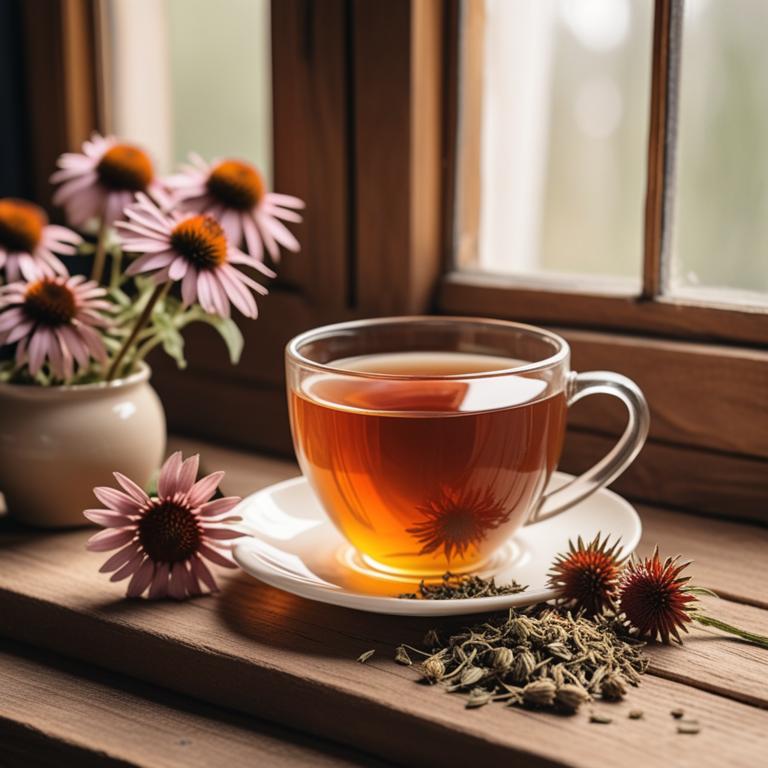
Echinacea purpurea teas have been traditionally used to treat the flu ailment due to their immunomodulatory and anti-inflammatory properties.
These properties help to boost the immune system and alleviate symptoms such as fever, fatigue, and congestion, thereby aiding in the recovery from the flu.
The bioactive constituents of Echinacea purpurea teas, including alkylamides, caffeic acid derivatives, and phenolic acids, have been shown to exhibit antiviral and antimicrobial activities that help to combat the flu virus.
The benefits of using Echinacea purpurea teas to treat the flu include reduced duration and severity of symptoms, improved immune function, and enhanced overall well-being.
Related Study
According to "Phytomedicine : international journal of phytotherapy and phytopharmacology", Echinacea purpurea teas for flu may be a low-risk and effective alternative to standard symptomatic medicines for the treatment of common cold, although the study specifically investigated the efficacy of tablets and not teas.
2. Echinacea angustifolia teas
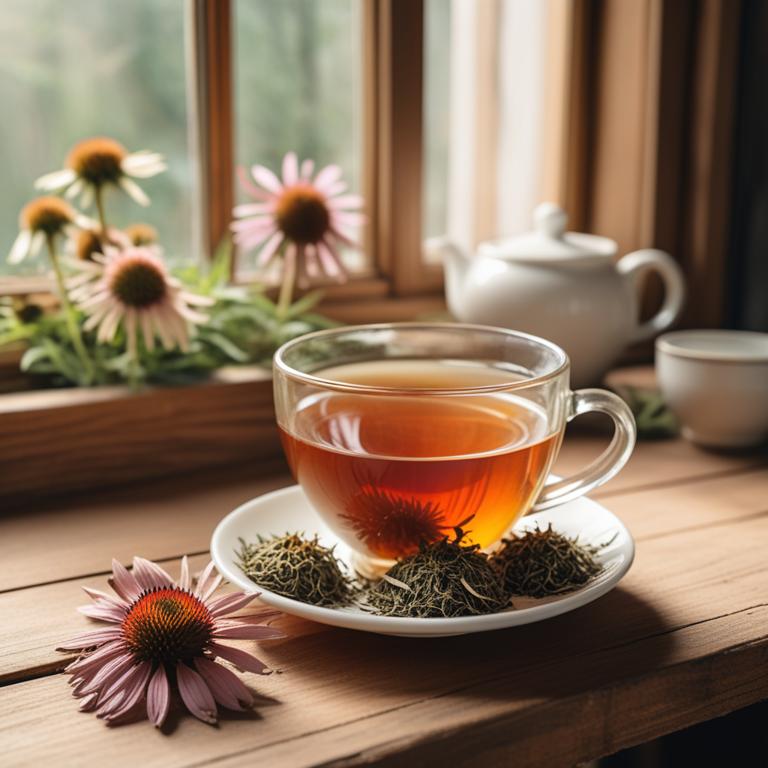
Echinacea angustifolia teas have been traditionally used to help alleviate the symptoms of the flu, offering relief from congestion, fever, and cough.
The properties of this herbal preparation work to boost the immune system, reducing the severity and duration of the flu.
The bioactive constituents, including alkylamides, glycoproteins, and phenolic acids, have been shown to exhibit immunomodulatory and anti-inflammatory effects, which help to treat the flu ailment.
The benefits of Echinacea angustifolia teas include reducing the risk of complications, shortening the recovery period, and providing natural relief from flu-related symptoms.
Related Study
According to "Forschende Komplementarmedizin und klassische Naturheilkunde = Research in complementary and natural classical medicine", Echinacea angustifolia teas have been used to help prevent and treat flu due to their immunostimulant properties, although the active principles still remain open to identification.
3. Echinacea pallida teas
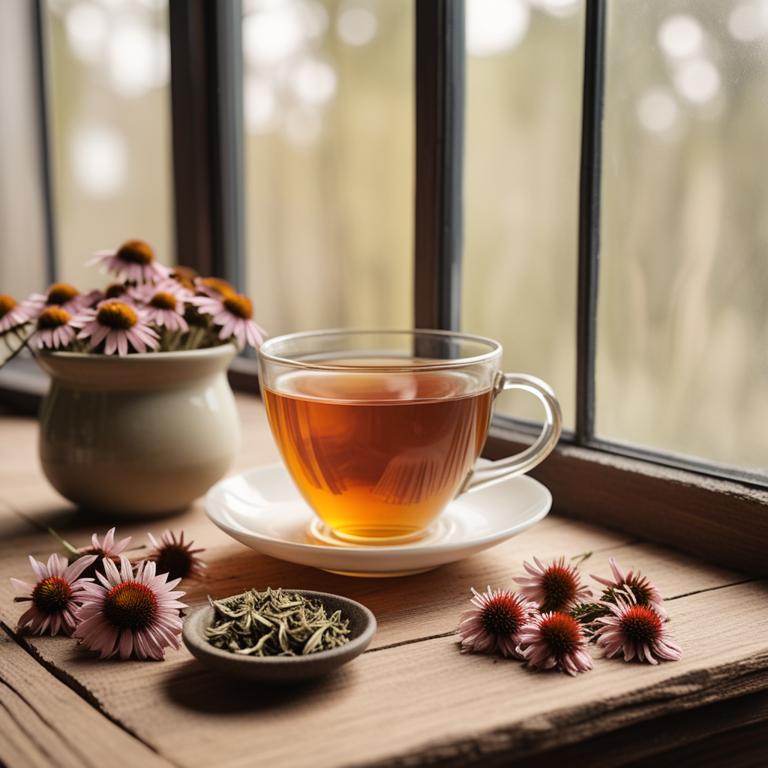
Echinacea pallida teas have been traditionally used to help alleviate the symptoms of the flu ailment, particularly its anti-inflammatory properties which assist in reducing fever and congestion.
The bioactive constituents such as alkylamides, caffeic acid derivatives, and polyacetylenes in Echinacea pallida teas help to boost the immune system by stimulating the production of white blood cells and activating natural killer cells.
This herbal preparation also exhibits antimicrobial properties, helping to combat the underlying viral or bacterial infection that causes the flu.
The benefits of using Echinacea pallida teas to treat the flu include reduced severity and duration of symptoms, as well as a lower risk of complications, making it a popular natural remedy for flu prevention and treatment.
Related Study
According to "The Journal of family practice", Echinacea pallida teas may be beneficial for the early treatment of acute upper respiratory infections, such as the flu, although the evidence is not without limitations and the influence of publication bias is unknown.
4. Zingiber officinale teas

Zingiber officinale teas, also known as ginger tea, have been used to treat the flu ailment due to their anti-inflammatory, antimicrobial, and expectorant properties.
These properties help to reduce nausea and vomiting, relieve congestion, and alleviate body aches associated with the flu.
The bioactive constituents of ginger tea, such as gingerols and shogaols, possess analgesic and antipyretic properties that help to reduce fever and soothe a sore throat.
Drinking ginger tea can provide relief from flu symptoms and help the body recover faster, making it a popular natural remedy for this common ailment.
Related Study
According to the study, Zingiber officinale teas for flu may offer antioxidant, anti-inflammatory, and immunostimulatory properties, which can aid in stimulating the immune system and lowering the risk of severe COVID-19 symptoms such as lung injury.
5. Glycyrrhiza glabra teas

Glycyrrhiza glabra teas, also known as licorice root tea, have been traditionally used to help alleviate symptoms associated with the flu.
The anti-inflammatory and expectorant properties of this herbal preparation help to treat the flu ailment by reducing congestion and relieving coughs.
The bioactive constituents, including glycyrrhizin and flavonoids, exhibit antiviral and immunomodulatory activities, which aid in the treatment of the flu.
The benefits of using Glycyrrhiza glabra teas to treat the flu include reduced severity of symptoms, improved respiratory function, and enhanced immune response, making it a valuable natural remedy for flu management.
Related Study
According to "Mini reviews in medicinal chemistry", Glycyrrhiza glabra teas for flu may be beneficial due to their potential to modulate the immune system, inhibit virus growth, and produce anti-inflammatory activity.
6. Taraxacum officinale teas
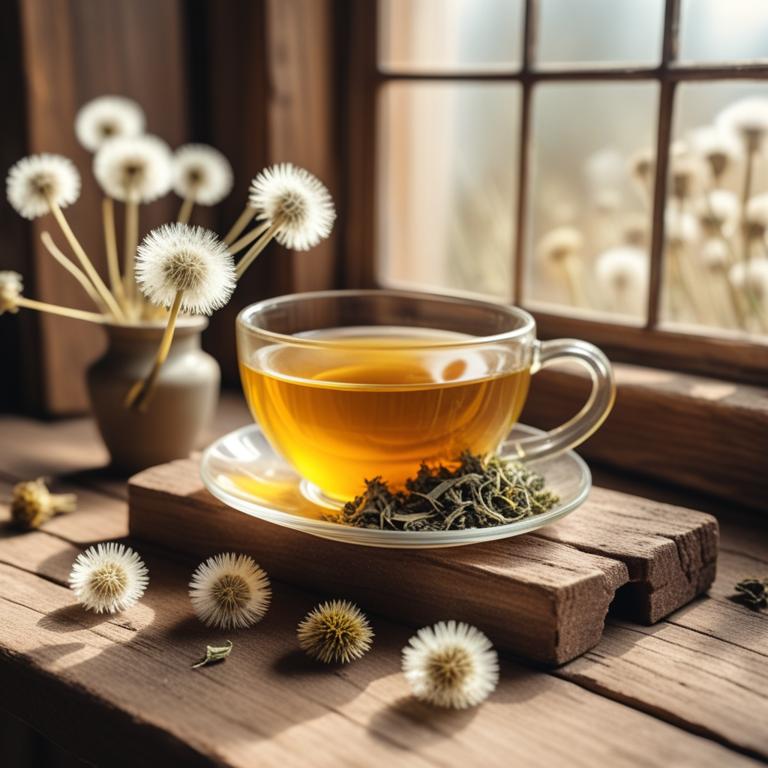
Taraxacum officinale teas, also known as dandelion tea, have been used to treat the flu ailment due to their anti-inflammatory and antioxidant properties.
The herbal preparation helps to treat the flu by reducing inflammation in the body, relieving congestion, and soothing a sore throat.
The bioactive constituents of Taraxacum officinale tea, including flavonoids, phenolic acids, and terpenoids, play a crucial role in its therapeutic effects, helping to modulate the immune system and reduce the severity of flu symptoms.
The benefits of using Taraxacum officinale tea to treat the flu include its ability to provide quick relief from symptoms, promote recovery, and boost the body's natural defenses against infection.
7. Eucalyptus globulus teas
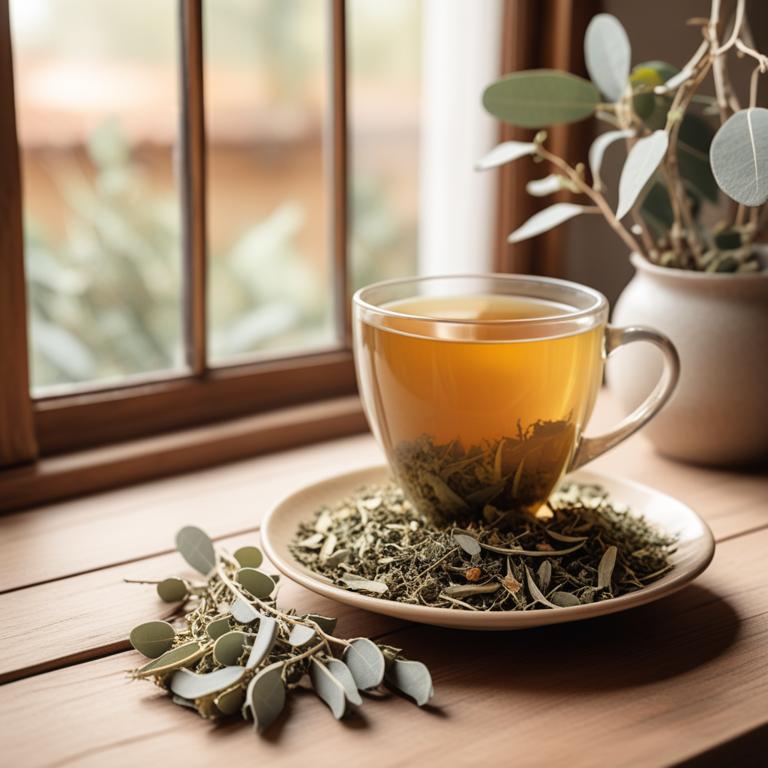
Eucalyptus globulus teas have been traditionally used to treat the flu ailment due to their decongestant and anti-inflammatory properties, which help to relieve congestion and soothe the respiratory system.
The bioactive constituents, including eucalyptol, limonene, and pinene, possess antimicrobial and expectorant properties that aid in reducing the severity of flu symptoms and promoting the clearance of mucus from the airways.
By drinking Eucalyptus globulus teas, individuals can experience a reduction in fever, coughing, and overall discomfort associated with the flu, allowing for faster recovery and improved quality of life.
The benefits of using Eucalyptus globulus teas to treat the flu include its natural and non-addictive nature, making it a popular choice for those seeking a holistic approach to managing this common illness.
Related Study
According to "Evidence-based complementary and alternative medicine : eCAM", Eucalyptus globulus teas for flu have been cited as one of the top traditional treatments for respiratory tract infections in Ethiopia, with a frequency of citation of 6.8%.
8. Melissa officinalis teas
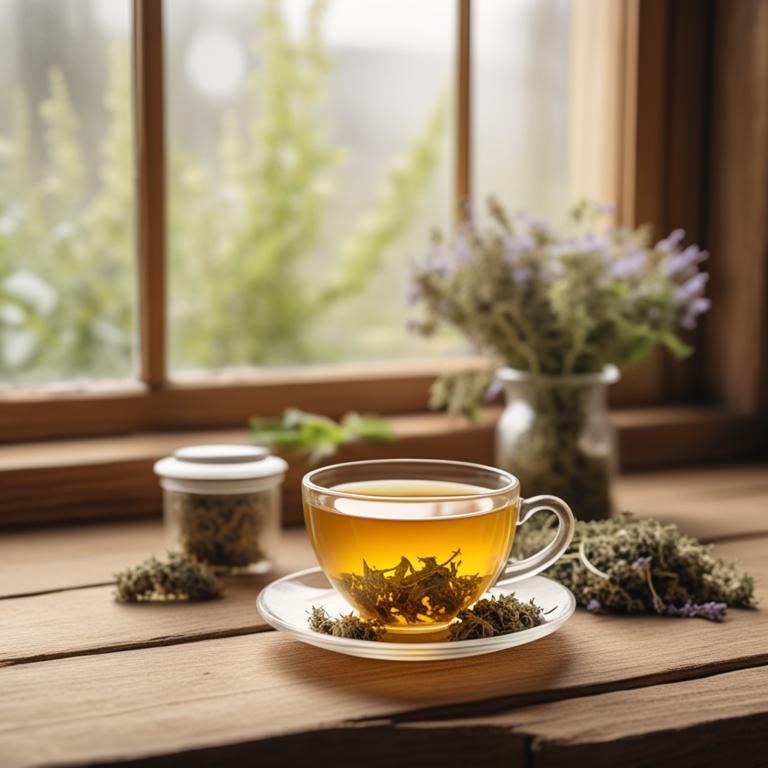
Melissa officinalis teas, also known as lemon balm tea, have been traditionally used to treat the flu ailment due to their antiviral, anti-inflammatory, and antispasmodic properties.
The bioactive constituents of Melissa officinalis, including rosmarinic acid and carnosic acid, help to alleviate flu symptoms by reducing inflammation, relieving respiratory congestion, and modulating the immune system.
Drinking Melissa officinalis teas may help to soothe a sore throat, calm a cough, and ease body aches associated with the flu, ultimately promoting a faster recovery.
The benefits of using Melissa officinalis teas to treat the flu include reduced severity of symptoms, quicker recovery time, and a lower risk of developing complications.
Related Study
According to "Journal of ethnopharmacology", Melissa officinalis teas for flu have been identified as one of the most investigated taxa with 7.0% of the total plants used in Turkey for the prevention and treatment of influenza.
9. Sambucus nigra teas
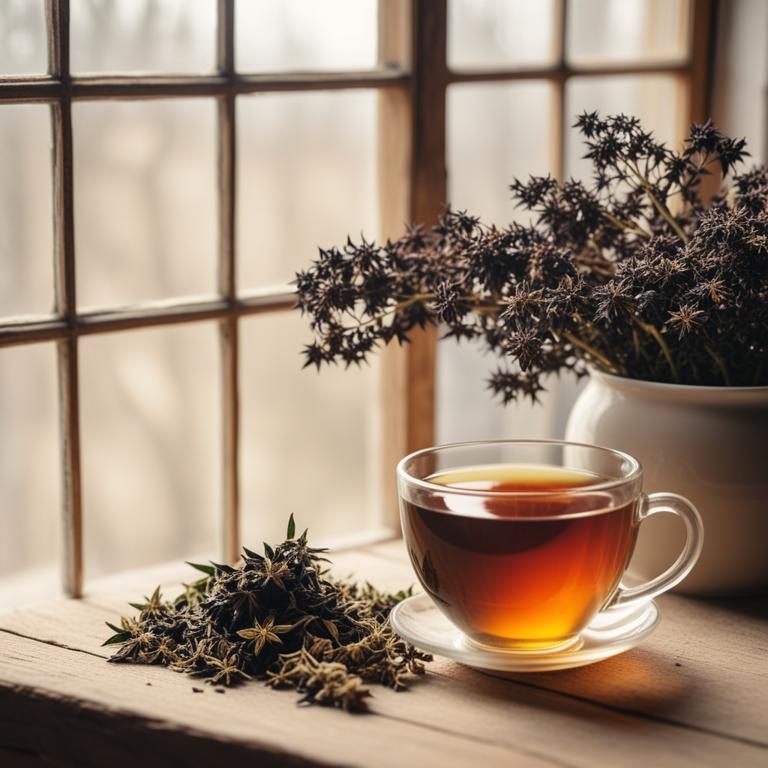
Sambucus nigra teas have been traditionally used to help alleviate the symptoms of the flu, a highly contagious respiratory illness.
The antiviral and anti-inflammatory properties of Sambucus nigra teas are particularly beneficial in treating the flu, as they help to reduce the severity of symptoms such as fever, sore throat, and fatigue.
The bioactive constituents of Sambucus nigra teas, including flavonoids, phenolic acids, and saponins, play a key role in its therapeutic effects, which include inhibiting the replication of viral particles and reducing inflammation in the respiratory tract.
The benefits of using Sambucus nigra teas to treat the flu include its ability to provide rapid relief from symptoms, reduce the duration of illness, and promote overall well-being, making it a popular natural remedy for this common ailment.
Related Study
According to "The Israel Medical Association journal : IMAJ", Sambucus nigra teas, specifically Sambucol preparations, have been found to increase the production of cytokines, which are essential components of the immune system, potentially aiding in the fight against flu.
10. Echinophora sibthorpiana teas

Echinophora sibthorpiana teas have been traditionally used to treat the flu ailment due to their anti-inflammatory and antimicrobial properties, which help to reduce the severity of symptoms such as fever, cough, and sore throat.
This herbal preparation has been found to be effective in treating the flu by helping to boost the immune system, reduce inflammation, and alleviate congestion.
The bioactive constituents of Echinophora sibthorpiana teas, including flavonoids and terpenes, have been shown to possess antioxidant and anti-inflammatory activities that contribute to their therapeutic effects.
The benefits of using Echinophora sibthorpiana teas to treat the flu include reduced recovery time, alleviated symptoms, and a lower risk of complications, making it a popular natural remedy among those seeking alternative treatments.
11. Rosmarinus officinalis teas
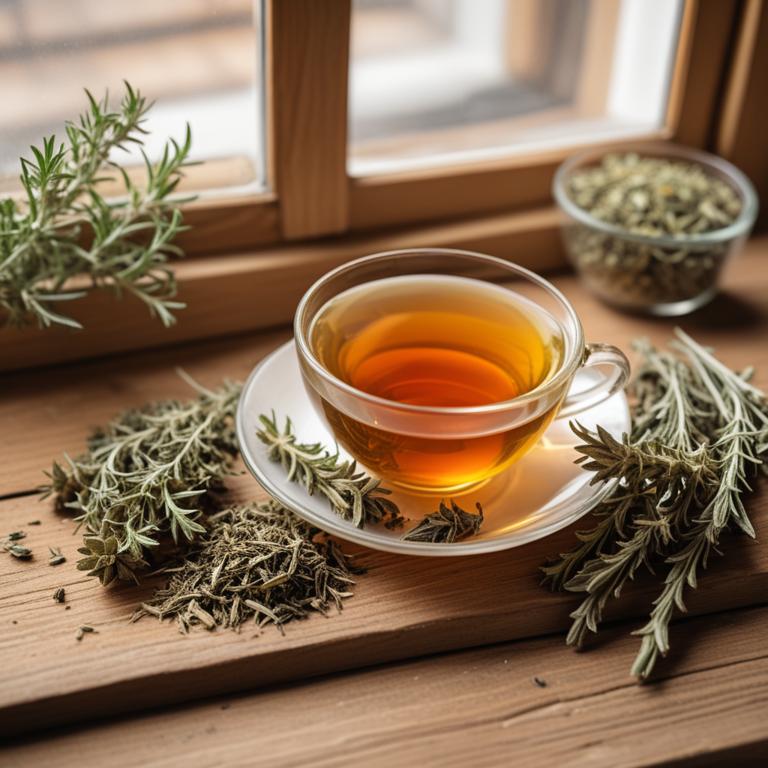
Rosmarinus officinalis teas, derived from the leaves of the rosemary plant, have been traditionally used to treat the flu ailment due to their anti-inflammatory, antimicrobial, and antiviral properties.
The herbal preparation helps to treat the flu by reducing fever, relieving congestion, and soothing a sore throat, making it easier to manage symptoms and recover from the illness.
The bioactive constituents of Rosmarinus officinalis teas, including camphor, bornyl acetate, and rosmarinic acid, contribute to its therapeutic effects by inhibiting the growth of flu viruses and reducing inflammation in the body.
The benefits of using Rosmarinus officinalis teas to treat the flu include reducing the severity and duration of symptoms, preventing complications, and promoting overall well-being.
12. Thymus serpyllum teas
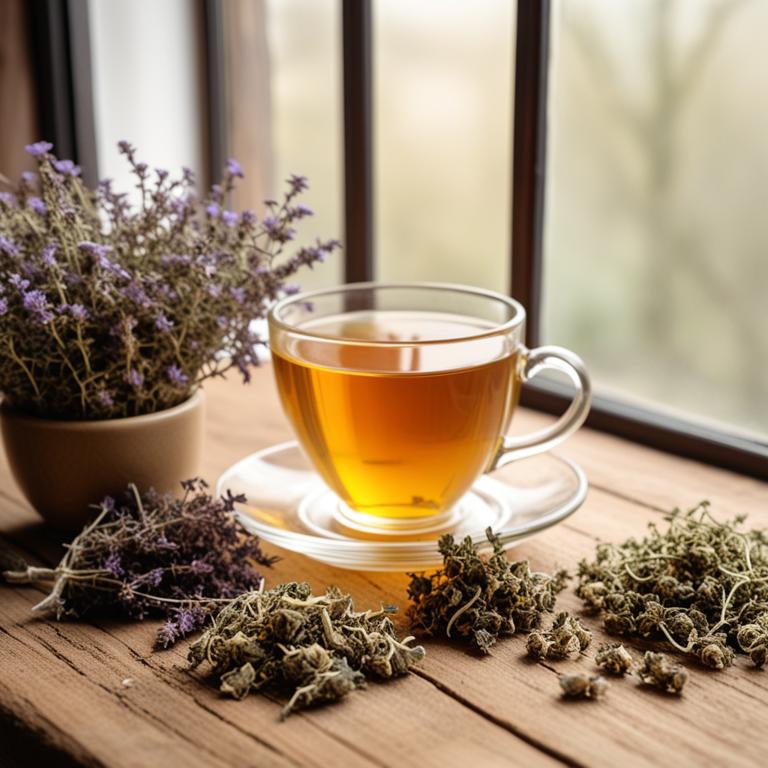
Thymus serpyllum teas, also known as wild thyme, have been used for centuries to treat the flu ailment due to their antibacterial, antiviral, and anti-inflammatory properties.
This herbal preparation helps to treat the flu by reducing the severity of symptoms, such as congestion, cough, and fever, and by supporting the immune system to fight off the infection.
The bioactive constituents of Thymus serpyllum teas, including thymol, carvacrol, and rosmarinic acid, have been shown to exhibit antiviral activity against influenza viruses, making it an effective remedy for the flu.
The benefits of using Thymus serpyllum teas to treat the flu include quick relief from symptoms, reduced risk of complications, and a natural alternative to conventional medications.
13. Achillea millefolium teas
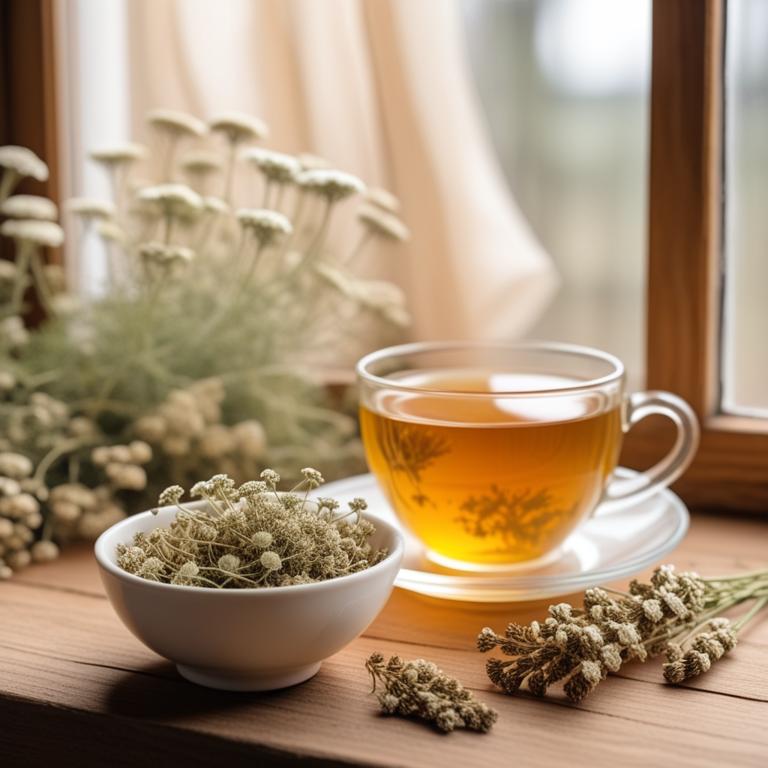
Achillea millefolium teas, also known as yarrow tea, have been traditionally used to treat the flu ailment due to their anti-inflammatory, antiviral, and antimicrobial properties.
The bioactive constituents of yarrow tea, including sesquiterpene lactones, flavonoids, and phenolic acids, help to reduce fever, alleviate congestion, and combat viral and bacterial infections that cause the flu.
By drinking yarrow tea, individuals can benefit from its ability to modulate the immune system, reduce inflammation, and alleviate symptoms associated with the flu, such as cough, sore throat, and body aches.
Regular consumption of yarrow tea may also help to prevent the flu by boosting the body's natural defenses and reducing the severity of symptoms if contracted.
Related Study
According to "BMC complementary and alternative medicine", Achillea millefolium teas may be effective in treating flu symptoms due to its antibacterial properties, as it showed strong effectiveness against moderately virulent microbes, including Salmonella typhimurium, in laboratory assays.